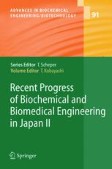Search
Search Results
-
Hydrogels for Musculoskeletal Tissue Engineering
The advancements in scaffold-supported cell therapy for musculoskeletal tissue engineering have been truly dramatic in the last couple of decades....
-
Aging and mitochondrial dysfunction in the filamentous fungus Podospora anserina
In the filamentous fungus Podospora anserina, mitochondria play a paramount role in life span control and aging. During aging, these organelles...
-
The human Werner Syndrome as a model system for aging
The aging process is one of the most challenging biological pathways to understand. Applications of model systems for aging have contributed...
-
Aging and the programmed death phenomena
Biochemical mechanisms of the programmed death phenomena are considered at levels of unicellular organisms, mitochondria, cells, groups of cells, and...
-
Checkpoint and Coordinated Cellular Responses to DNA Damage
The DNA damage and replication checkpoints are signaling mechanisms that regulate and coordinate cellular responses to genotoxic conditions. The...
-
Application of Knowledge Information Processing Methods to Biochemical Engineering, Biomedical and Bioinformatics Fields
In biochemical and biomedical engineering fields there are a variety of phenomena with many complex chemical reactions, in which many genes and...
-
Regulation of S Phase
Regulation of DNA replication is critical for accurate and timely dissemination of genomic material to daughter cells. The cell uses a variety of...
-
Cell-free Protein Synthesis Systems: Increasing their Performance and Applications
The Escherichia coli cell-free protein synthesis system can now be used for various proteins that need special requirements, such as disulfide bond...
-
Regeneration of Articular Cartilage
Loss of articular cartilage from the ends of bones forming diarthrodial joints can be the source of profound pain and disability, and eventually lead...
-
Bioprocess Monitoring Using Near-Infrared Spectroscopy
Near-infrared spectroscopy (NIR) is a nondestructive analytical technique that has been used for simultaneous prediction of the concentrations of...
-
Metabolic Flux Analysis Based on 13C-Labeling Experiments and Integration of the Information with Gene and Protein Expression Patterns
The recent progress on metabolic systems engineering was reviewed, in particular focusing on the metabolic flux analysis (MFA) based on the...
-
Transgenic Birds for the Production of Recombinant Proteins
Transgenic birds were expected to be an excellent transgenic bioreactor for the production of recombinant pharmaceutical proteins. However, the only...
-
Tissue Engineering Strategies for Bone Regeneration
Bone loss due to trauma or disease is an increasingly serious health problem. Current clinical treatments for critical-sized defects are problematic...
-
Control of Cell Proliferation and Growth by Myc Proteins
Myc proteins act as signal transducers that alter cell proliferation in dependence on signals from the extracellular environment. In normal cells,...
-
The Retinoblastoma Gene Family in Cell Cycle Regulation and Suppression of Tumorigenesis
Since its discovery in 1986, as the first tumor suppressor gene, the retinoblastoma gene (Rb) has been extensively studied. Numerous biochemical and...
-
Senescence and Cell Cycle Control
In response to various stresses, such as telomere shortening during continuous proliferation, oxidative stress, DNA damage and aberrant oncogene...
-
Recent Progress in Microbial Cultivation Techniques
Recent advances in the improvement of microbial cultivation are reviewed, with emphasis on biochemical engineering techniques as a means of obtaining...
-
High Rate Production of Hydrogen/Methane from Various Substrates and Wastes
To treat soluble and solid wastes and recover energy from them, high rate methane fermentation, especially using the UASB (upflow anaerobic sludge...
-
Mouse Models of Cell Cycle Regulators: New Paradigms
In yeast, a single cyclin-dependent kinase (Cdk) is able to regulate diverse cell cycle transitions (S and M phases) by associating with multiple...
-
Regeneration of Urologic Tissues and Organs
Patients suffering from a variety of urologic diseases may be treated with transplanted tissues and organs. However, there is a shortage of donor...
